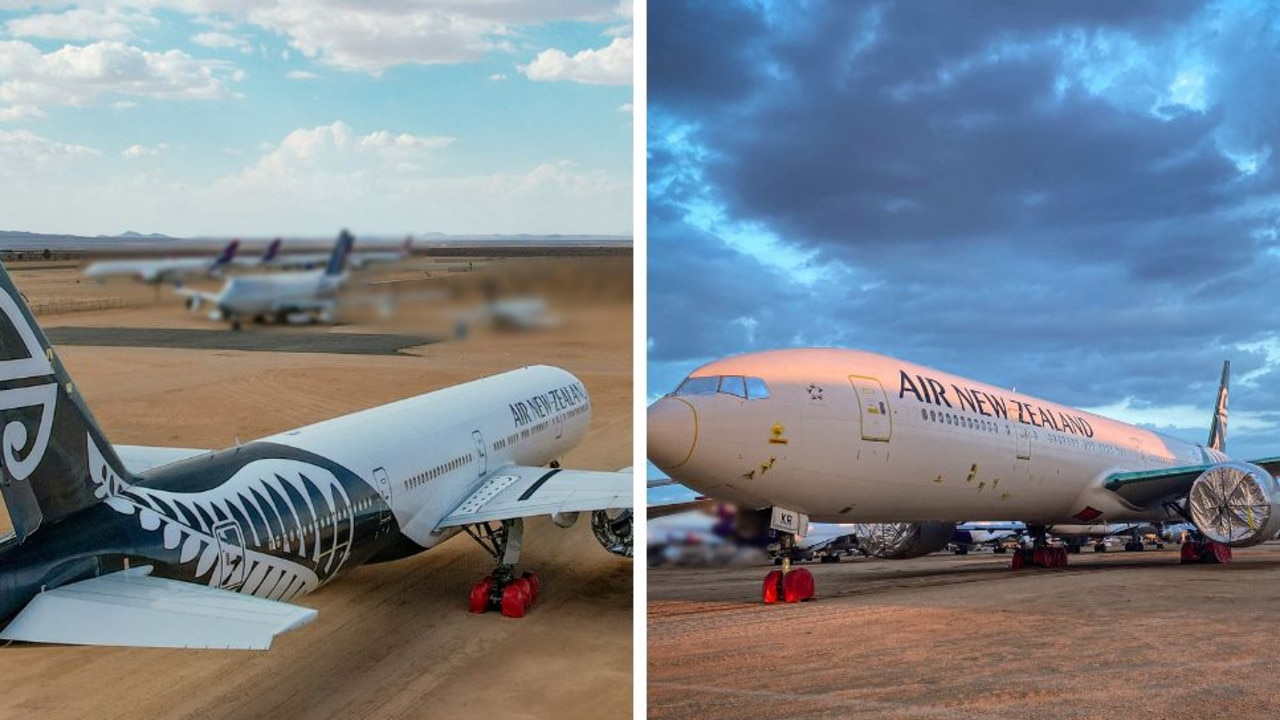Air New Zealand is bringing home its 777-300 after almost 700 days in an American desert.
In 2020, the airline sent four of its largest plans – the 777-300ER – to a storage facility in Victorville, California, in the Mojave Desert amid Covid-19 decimating international travel.
At that time it was unknown when they would return.
But now, given the sheer demand for flights, the airline is bringing its largest widebody jet aircraft out of hiding to bolster its network.
Air New Zealand chief operating officer Alex Marren said one of the most exciting things about bringing back these aircraft is the airline is going to hire and rehire people to service them and the rest of it fleet.
Stream your news live & on demand with Flash. From CNN International, Al Jazeera, Sky News, BBC World, CNBC & more. New to Flash? Try 1 month free. Offer ends October 31, 2022 >
“Since April 2021, we have welcomed back around or hired more than 2000 people across cabin crew, pilots, maintenance, engineers and airports and we’re looking for more,” Mr Marren told news.com.au.
“In our cabin crew alone we’ve hired and rehired around 1000 people, all of whom are really excited to welcome customers on-board.”
Mr Marren said when the hard decision was made to park their 777 fleet, they knew the desert was an ideal environment due to its warm and dry conditions.
“After being stored for almost two years in this climate, they are coming out of long term parking in good condition,” he added.
He explained it takes around six to eight weeks to get a desert-based 777-300 ready to fly and the team are working with a local maintenance provider to reanimate its aircraft out in the desert.
“The process starts off with a good wash to get rid of the dust and grime that has accumulated in long term parking out in the Mojave Desert,” Mr Marren said.
“Our engineering teams then remove the protective shrouds and materials on the wheels, sensors and wings and undertake a thorough servicing and maintenance program to get these aircraft serviceable and ready to fly again.”
He said a lot of work goes into making sure the aircraft is ready to fly — including servicing the wheels on the landing gear to checking upholstery and the in-flight entertainment system.
When is takeoff
The first 777-300 aircraft, registration ZK-OKP, is due to leave Victorville in late August for
Auckland where it will have scheduled maintenance before rejoining the 777-300 operating
fleet from late September.
It can carry up to 342 customers with up to 154 cubic meters of cargo capacity available.
“It’s a welcome change from the type of flying our operating aircrew did through the height of the pandemic and for those stepping back onto a 777-300 for the first time in more than two years, it will be an emotional reunion with one of their favorite aircraft,” Mr Marren said.
ZK-OKP is the first of four Victorville-based 777-300 aircraft to be reanimated and the airline
is working through a program to bring back the three remaining aircraft over the next
year. The airline also has three 777-300 aircraft that were stored in Auckland for the last two
years. Two of these aircraft are back in service, with 777-300 ZK-OKO due to re-enter service
in the coming weeks.
.

